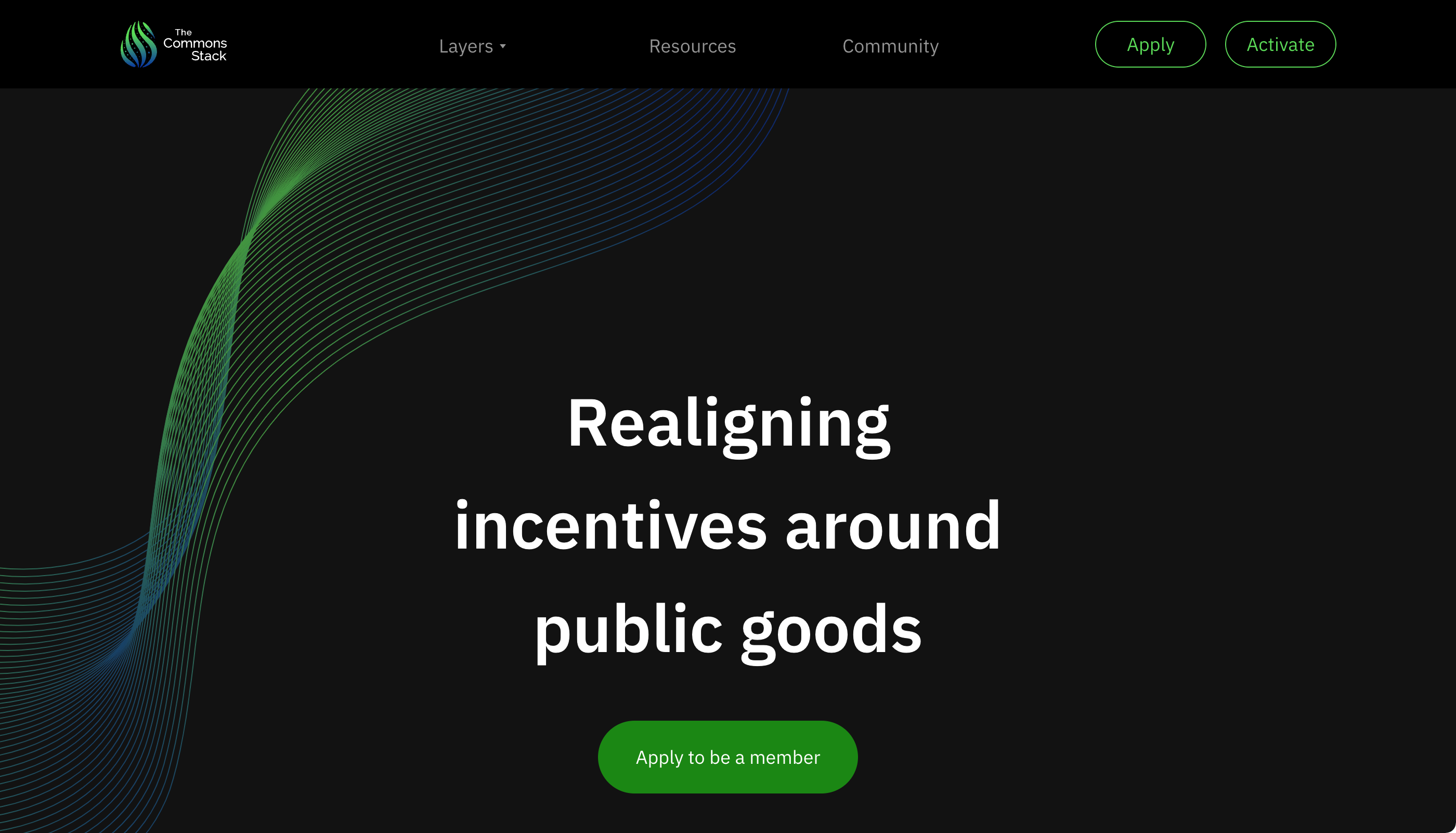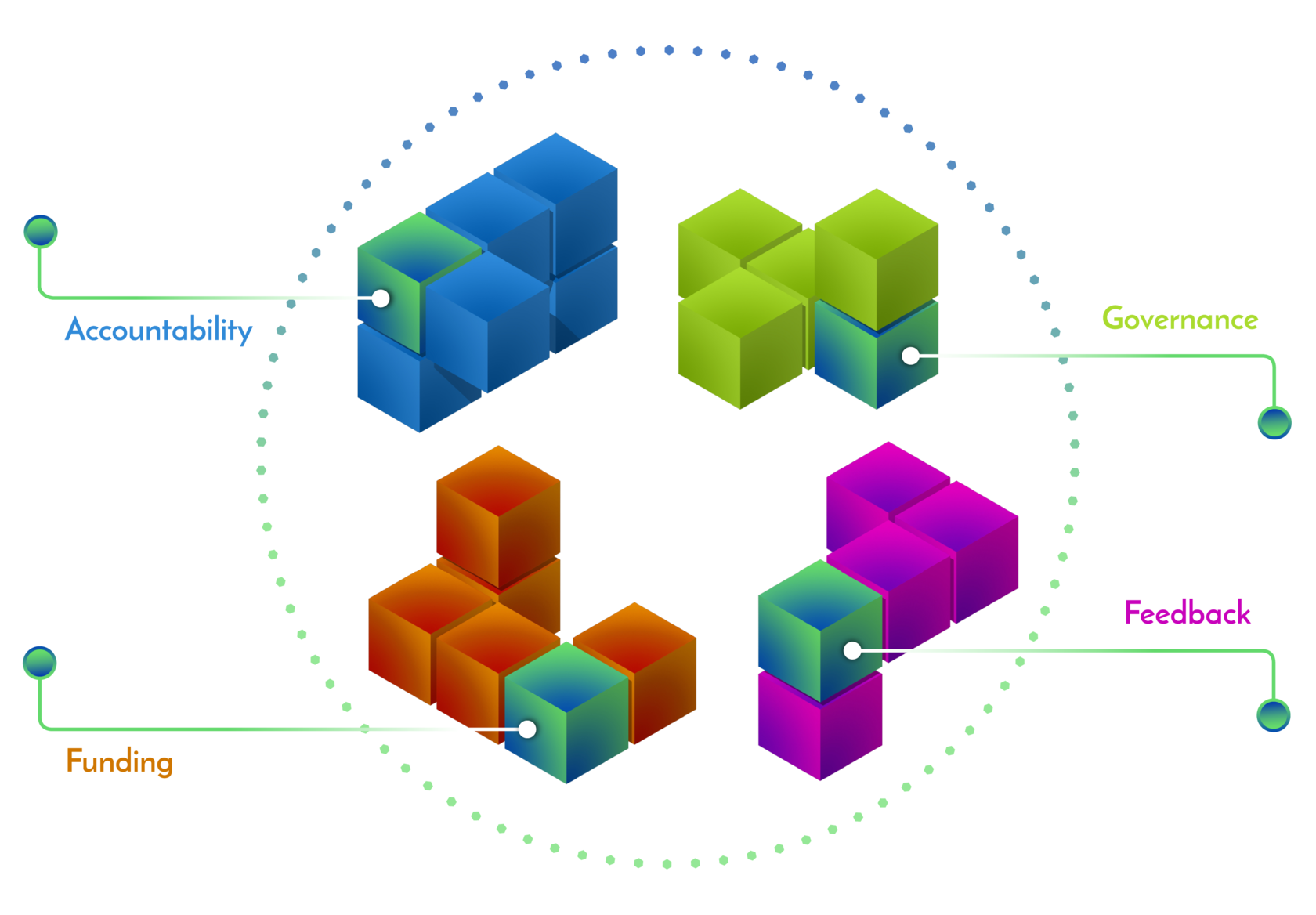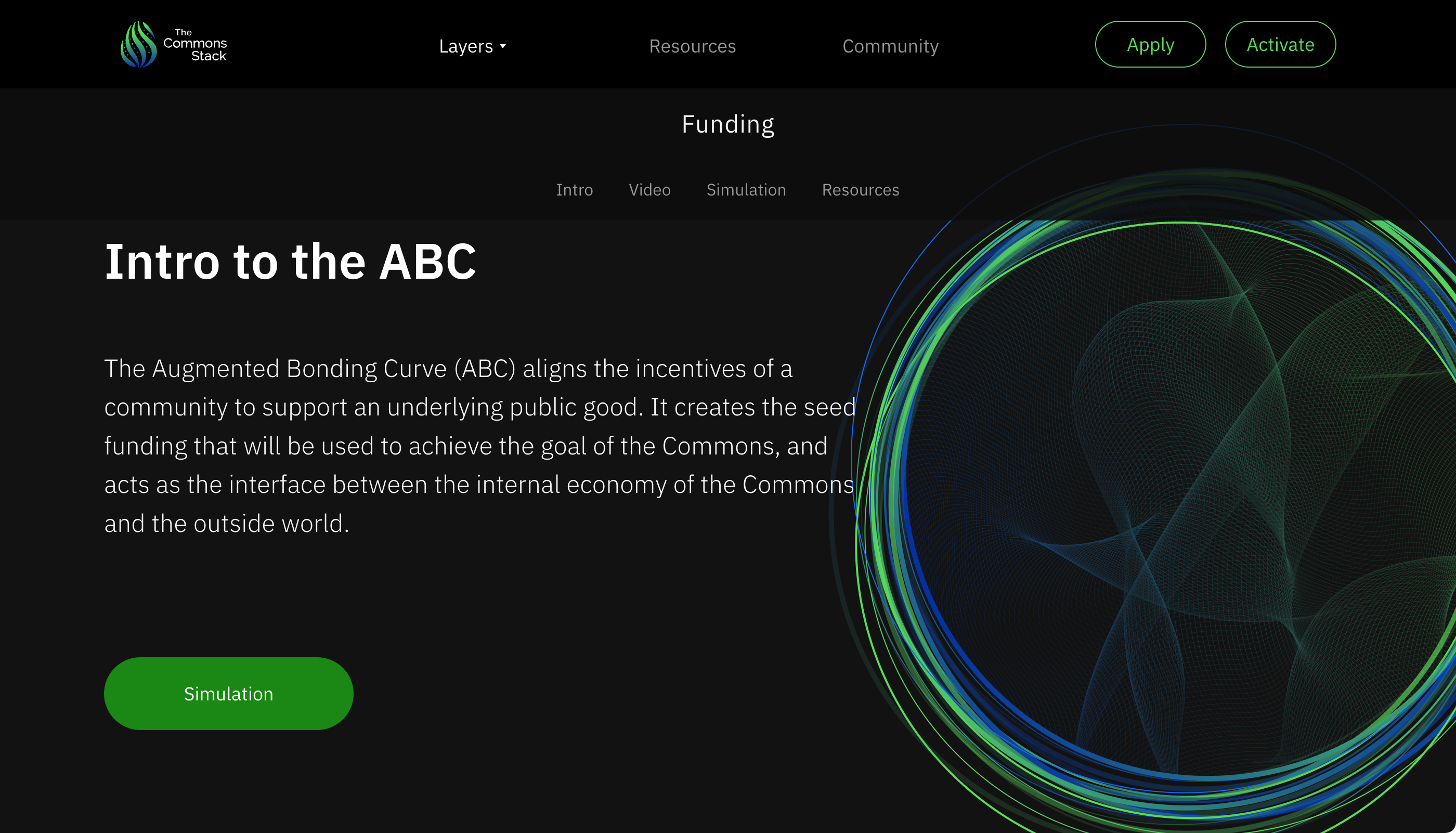The Commons Stack

About The Commons Stack
Purpose
From the front page we have mission and vision.
Mission
We are building commons-based microeconomies to sustain public goods through incentive alignment, continuous funding and community governance. Our library of open-source, interoperable web3 components will put effective new tools in the hands of communities, enabling them to raise and allocate shared funds, make transparent decisions, and monitor their progress in supporting the Commons.
Vision
We want to create a world where public goods are valued fairly for the benefits they deliver. Our current economic system frequently exploits the environment, and undervalues open-source software, open research, and other altruistic efforts addressing the collective needs of our society. We aim to change this.
FAQs: What is the goal of the Commons Stack?
First and foremost, the goal of the Commons Stack is to build the basic infrastructure to launch continuously funded Commons around an open source commons. This can be research focused such as Token Engineering or infrastructure focused such as building out ETH 2.0. You can find an overview of our phased iteration strategy here.
The ultimate goal of the Commons Stack is to provide digital infrastructure for scalable management of shared resources worldwide, to prioritize people and the planet by enabling regenerative intentional ecosystems. The Commons Stack is not directly solving these problems - what we are doing is scaling human coordination around shared goals, so communities (from the local to the global) can come together to solve their own problems. We are building the infrastructure to enable that collaboration. This is very long term though, with the current state of blockchain technology, it will most definitely be adopted first by open source dev communities to push forward on digital public infrastructure - a public good provided to the world.
How are they going to do that?
From the front page:
Our Commons have 4 layers, and for each we are building a fully open-source, interoperable component.

Ed: the most crucial and challenging IME is the Funding part so worth focusing on that. TODO.
Digging deeper from the link at the bottom of the page:
https://medium.com/commonsstack/deep-dive-augmented-bonding-curves-b5ca4fad4436
Augmented Bonding Curves (ABC)
- Almost nothing there (no substance)
- A hero section with hero text
- Brief intro to free-rider and again claim of solving it
- Then a simulation for their software for simulation of augmented bonding curve
- But their (augmented) bonding curve assumes the very thing they need to explain: it assumes people contribute money i.e. keep buying the token along the bonding curve. The whole question with a public good is why people will contribute (sufficiently) if contribution is voluntary -- why wouldn't they free-ride?
About
The Augmented Bonding Curve (ABC) aligns the incentives of a community to support an underlying public good. It creates the seed funding that will be used to achieve the goal of the Commons, and acts as the interface between the internal economy of the Commons and the outside world.

Why do we need it
Why
Funding for public goods today suffers from the free-rider problem. These public goods rely on donations or allocated tax revenue for support, which is rarely sustainable or sufficient for the value they produce. The ABC enables communities to create fully liquid micro-economies that provide alternative, incentive-aligned funding streams for important collective resources.
Commentary: Key issue is no justification for claim they have an alternative method for funding
Funding for public goods today suffers from the free-rider problem.
Yes, and not just today: since the beginning of human culture.
These public goods rely on donations or allocated tax revenue for support, which is rarely sustainable or sufficient for the value they produce.
Yes. Though it is sometimes sustainable (the question of sufficiency is complex) - sufficient for what? Equal to the value they produce? Sufficient to have them created?).
The ABC enables communities to create fully liquid micro-economies that provide alternative, incentive-aligned funding streams for important collective resources.
How on earth does it do this? What is the alternative funding stream?
Roughly there have been two options:
- Donations: voluntary and usually insufficient.
- Compulsory contributions (e.g. taxes): non-voluntary though potentially consensual - you chose to join the group and got a say in setting the level. Hence, usually much higher.
What new option are they providing?